ITALY
“The world is a book and those who do not travel read only one page” -- St. Augustine
Florence
Cathedral of Santa Maria del Fiore
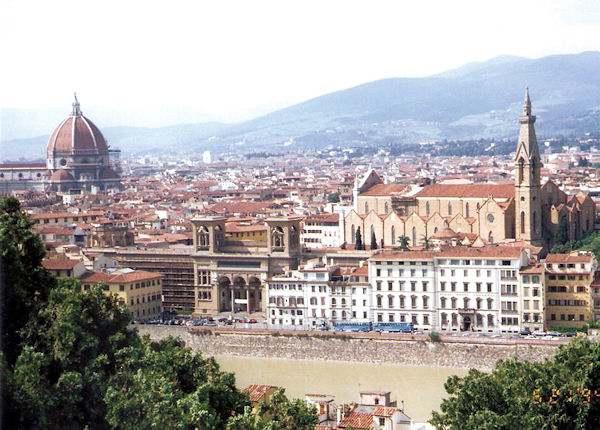
The prominate Red Dome can easily be seen from above the City.

Cathedral of Santa Maria del Fiore is the second largest cathedral in the world capable of holding 3,000 people. It was begun in 1296 and took 140 years to complete

There are ten panels in each of the two ornamental gates of the Cathedral's Baptistry

One of twenty guilt bronze panels. Every panel is as detailed as this single panel
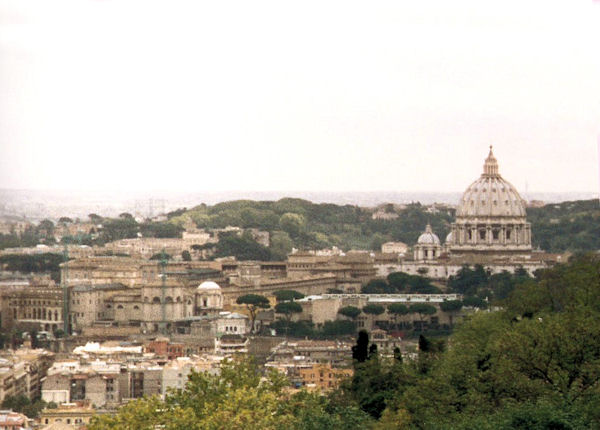

Fontana dei Neptuno - The Neptune Fountain was created in 1560-75 by Bartolomeo Ammannati. When Michelangelo saw it, he shook his head and moaned Ammannato, Ammannato, what a beautiful piece of marble you have ruined.

The old quarter, with its renaissance architecture, paintings and sculptures, could almost be described as a living museum

David was sculptured by Michelangelo in 1504 when he was 27 years old. The figure stands 14 feet high and its majesty and detail are overwhelming

By Michelangelo

By Michelangelo

By Michelangelo

Ponte Vecchio - This is the oldest bridge in Florence. It is lined with goldsmith shops and appears to be a normal street until reaching the middle where the Arno River can be seen flowing beneat

Naples
The Bay of Naples

The Bay of Naples as seen from Amalfi Drive, one of the most spectacular Drives in Europe
Pisa
The Tower of Pisa

Construction was begun in 1172 but, by the time they had completed 3 stories, it began to lean and was abandoned. In the middle of the 14th century it was completed but the lean was never corrected

The Tower stands 180 feet high. It is built of white marble and was leaning a total of 14 feet from the perpendicular at the time of this photograph. The Tower was moving at a rate of 1/4 inch per year and visitors were no longer allowed in the Tower. - Later attempts to counter balance the lean by pilling tons of lead on the opposite side seemed to work and the Tower was re-opend to visitors
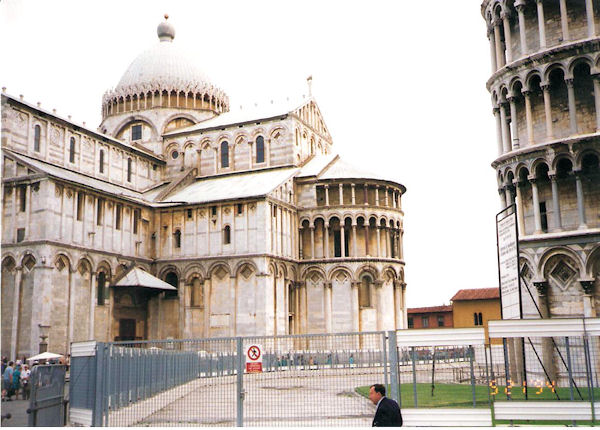
Duomo di Pisa - Begun in 1093, Pisa Cathedral is a masterpiece of Romanesque architecture. Despite its proximity to the eye-catching and tourist-attracting Leaning Tower, the Duomo still dominates the monumental Piazza dei Miracoli in Pisa

The Baptistry of the Pisa Cathedral

A disastrous fire in 1595 destroyed most of the cathedral's medieval art, but some of the best Renaissance artists were hired for the redecoration work
Pompeii
The Forum

The excavations of Pompeii over the past 400 years have made it the best preserved ancient Roman town in existance and yielded more information about Roman life than any other site

The Forum had been damaged by earthquakes and repaired before the volcanic eruption

Pompeii was burried under 65 feet of volcanic ash from an eruption of Mt. Vesuvius in 79 AD. (JK photo)

Streets of Pompeii

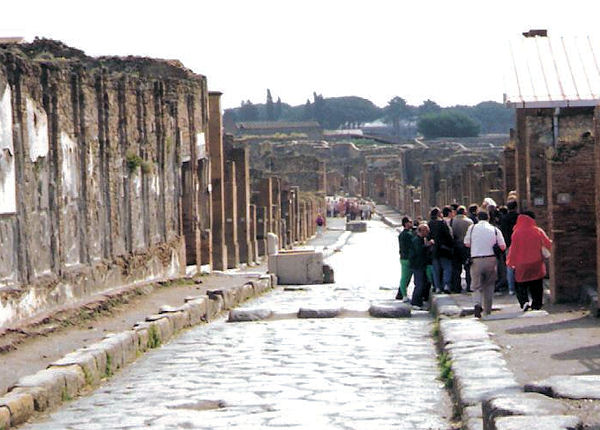
Stepping Stones were used so the streets could be crossed in rainy weather. The stones were spaced so chariot wheels could pass on either side and the horse could run between them
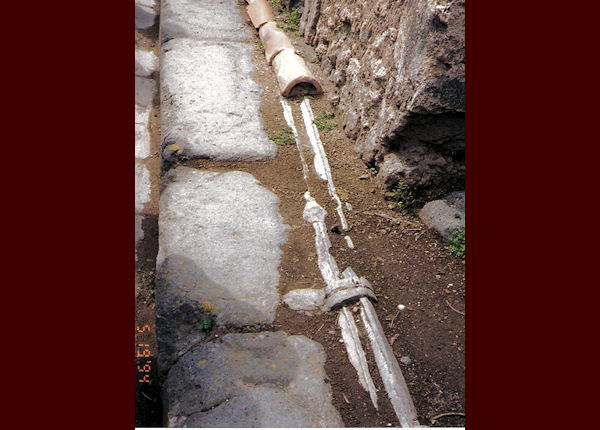
Water lines
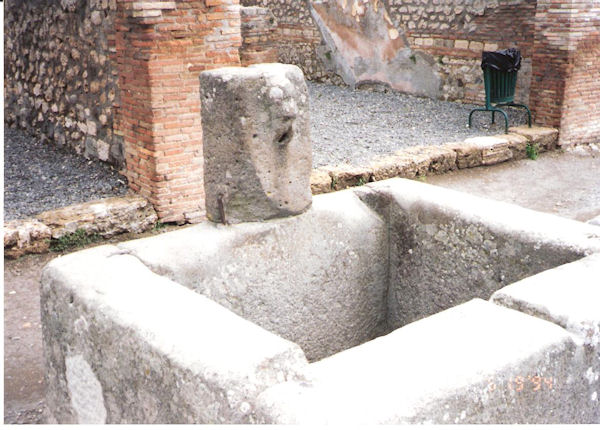
The Roman's had learned how to use the pipes to carry water to the fountains and their homes

This is thought to have been a bank

This Bakery was so carefully unearthed that its mills, oven and even some loaves of bread were preserved

The bakery oven

Street names were on the corners of the buildings



The Vetti Brother's house was the best preserved. Many rooms were still intact

The Vetti Brother's house

The Vetti Brother's house

The Vetti Brother's house

The brothel has many well preserved paintings that appeared over the door of each tiny room



This garden was reproduced to be exactly as it was 2,000 years ago


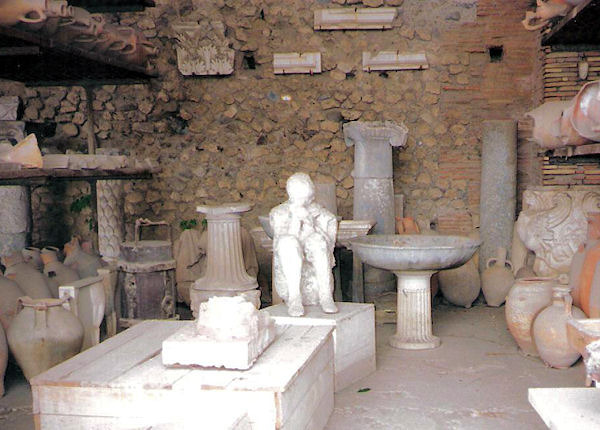
Out of a total population of 20,000, it's thought that only 2,000 actually perished, asphyxiated by the toxic fumes of the volcanic debris

When human remains were found, a body mould was cast before the earth was disturbed

The body mould of a pregnant woman
Rome
The Colosseum

The Colosseum - Inaugurated by Titus in 80 AD, it was the arena for games and galdiators. - Long after it ceased to be an arena, the Colosseum was damaged by an earthquake. Centuries later its rich marble facing was stripped away to build palaces and churches. A third of the original structure is all that remains today
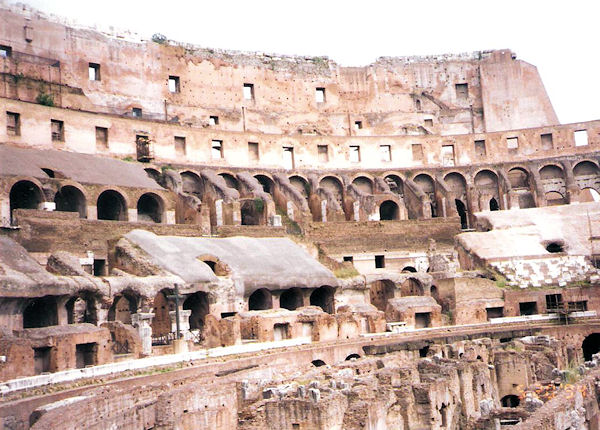
Seating nearly 60,000 spectators, the canopied Colosseum could be flooded and realistic naval battles were staged. - At its peak, exotic animals were used to satisfy jaded tastes (lion vs. bear, two humans vs. hippopotamus, or whatever). Many historians now believe that the legend that Christians were fed to the lions is unfounded

Fontana di Trevi, 1762
Neptunus Rex standing on a shell chariot drawn by winged steeds and probably the most famous fountain in Rome

This little piazza was nearly always deserted before the movie Three Coins in the Fountain

The Spanish Steps
Its 137 steps link the Trinita dei Monti Church with the Baraccia Fountain below
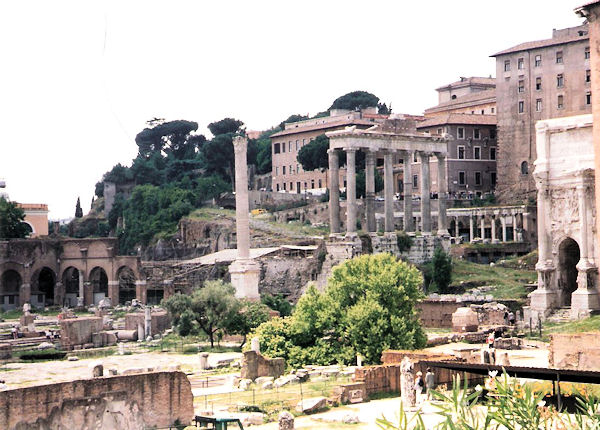
The Forum
When it came to cremating Caesar, purchasing a harlot, sacrificing a naked victim, or just discussing the day's business, the Forum was the place to go

At night vestal virgins guarded the temple's sacred fire. Failure to keep the fire burning and their own passions under control sent them to an early grave - alive!

The Catacombs

Arch of Constantine - Built circa 315 AD

Il Vittoriano - This monument to Victor Emanuel was is constructed of all white marble and took 26 years to build

Castel San Angelo on the Tiber River

The Tiber River separates the City of Rome from The Vatican
Sorrento
The Bay of Naples

For the Romans, the Bay of Naples was the land of plenty, a blessed region of mild climate, gorgeous scenery and an accessible location that made it a favorite vacation and retirement area for the region's nobility

Sorrento is a peaceful resort and traditional holiday center amid beautiful cliff-side gardens
Vatican City
Vatican is a Soverign State

This tiny soverign state is governed by the Pope and protected by a small army of Swiss Guards. It contains the residence of the Pope, the worlds largest church and the most famous square and has its own post office and stamps
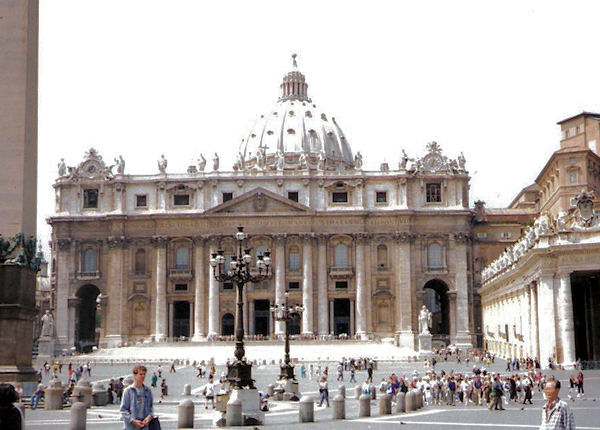
St. Peter's Basilica
The largest Catholic church ever built, it was consecrated in 1626 after many years of construction under various architects. - The dome of the Basilica is an architectural masterpiece of Michelangelo. It was started when he was 71 and finished by Della Poria

St. Peter's Square is surrounded by 284 doric columns designed by Bernini
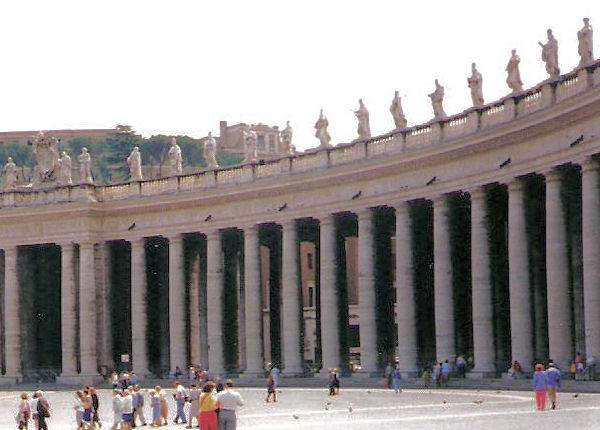
There are 142 statues of Saints on top of these mamonth columned structures

The Basilica


The tomb of St. Peter lies under the main alter and the Cathedral's dome rises above it


The Swiss Guard
Venice
The Canal Grande (Grand Canal)


Campanile di San Marco

Piazzetta San Marco
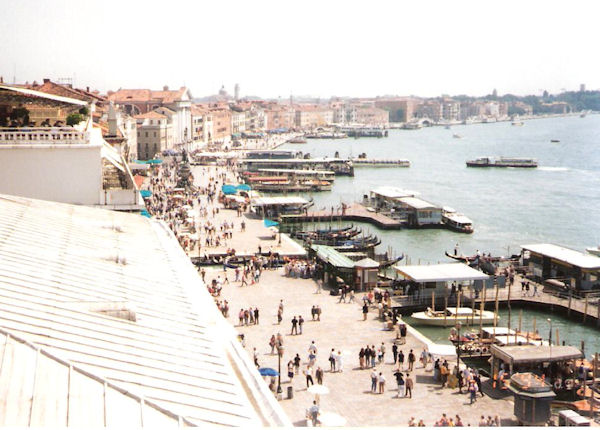
Venice is made up of 120 islands which are separated by 177 canals and spanned by 450 bridges

The gondola adds a touch of romance but it is also a practical means of transportation
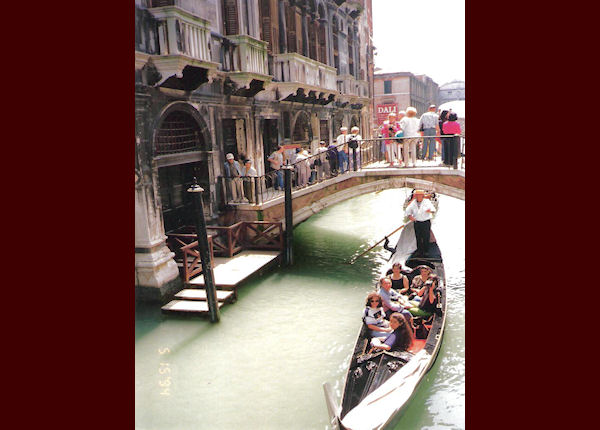

Pizza & Gelato

Isle of Capri, Sicily
Its natural beauty has been celebrated for the last 2000 years

Capri is a tiny island with an area of 5 1/2 square miles located in the Tyrrhenian Sea off the Sorrento Peninsula

The Funicular (red building) is the only way for people and supplies to reach the top of Capri

Capri was brought into the "tourist orbit" by Augustus Caesar, the first Roman Emperor
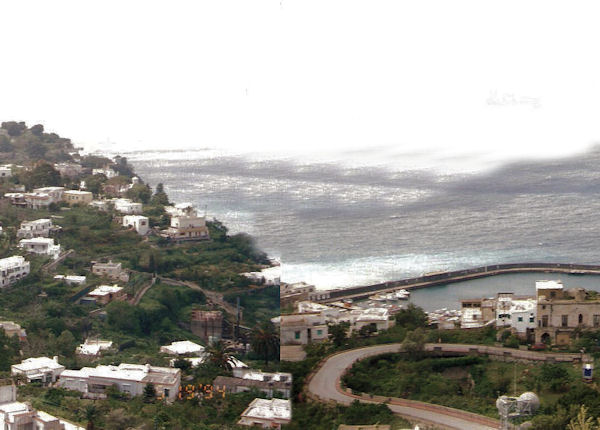
Its natural beauty has been celebrated for the last 2000 years


Mt. Vesuvius

Mt. Vesuvius is visible on a clear day

Messina, Sicily
The Port of Messina

The Port of Messina dates back to the 8th century BC but Messina has been badly damaged by earthquakes and destroyed by World War II so today it is mostly a modern city

Sicily is the largest island in the Mediterranean Sea. It is rugged and mountainous with Mt. Etna, an active volcano, dominating its eastern coast. The peak of Mt. Etna is 10,900 feet

The Astronomical Clock is the world's largest figurine clock. Each day at noon the mechanism is activated
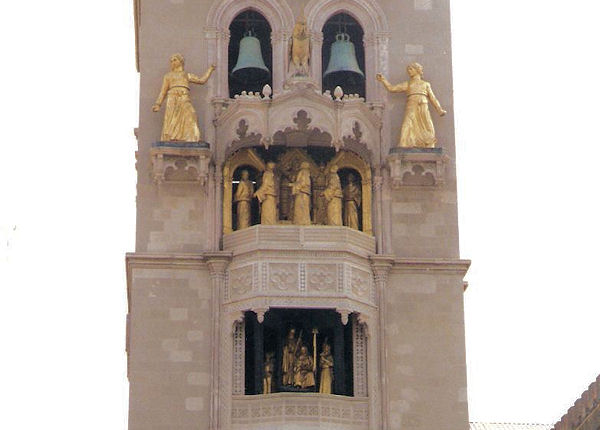
These figures and scenes appear on the balconys and move through a fifteen-minute cycle
Taormina, Sicily
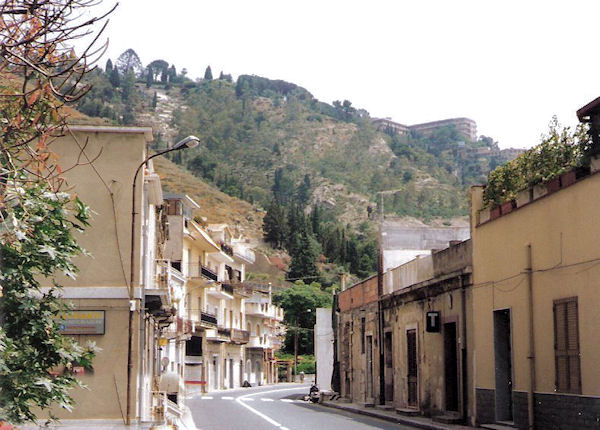
Taormina is about two hours train ride south of Messina


The town of Taormina is perched on a cliff overlooking the Ionian Sea.

Many of Taormina's buildings date back to the middle ages

Old town is about 820 ft above the sea, while a very steep and almost isolated rock, crowned by a Norman castle, rises about 490 ft higher

The Bay of Taormina

Taormina's beaches are on the Ionian sea

This Greco-Roman Theater faces the sea from a hill 700 feet high

The theater dates back to 358 BC. (JK photo)

This ancient theater is so renowned for its acoustics that it is still used to present Greek tragedies
Google Maps
Florence
Naples
Pisa
Pompeii
Rome
Sorrento
Vatican
Venice
Capri, Sicily
Messina, Sicily
Taormina, Sicily
©Copyright 2000
All rights reserved. No part of this publication may be reproduced,
stored, or transmitted in any form without my prior permission. Charles Tyrrell, Webmaster
stored, or transmitted in any form without my prior permission. Charles Tyrrell, Webmaster